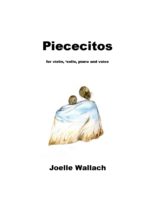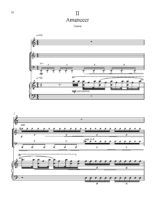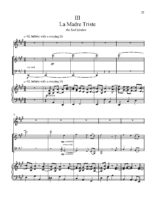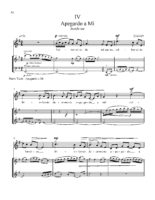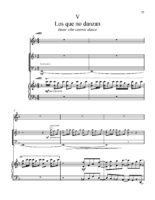Piececitos [15]
I from Piececitos “Piececitos”
III from Piececitos “La Madre Triste”
IV from Piececitos “Apogarde a mi”
click for VIDEO of London Performance of three of Piececitos’ five movements
yet another performance of
III “La Madre Triste” from Piececitos
OR on YouTube: https://www.youtube.com/watch?v=P-4EaDa9XFw
Piececitos is a vivid musical meditation on motherhood, migration and exile based on poems by Gabriela Mistral, the first Latin American to win a Nobel Prize in Literature. Set in the original Spanish, Piececitos’ five songs for voice, violin, cello and piano interweave Latin American dance rhythms with haunting melodies: lullabies and laments of a mother on her treacherous journey toward refuge.
I Piececitos – Little Feet
Simple harmonies begin the journey and grow disturbing as a mother flees toward safety. A baby is tied to her back, while a toddler trudges beside her on tiny feet, blue from the cold and bruised from the terrain. Strings trill intermittently, evoking crowds of ululating women and wailing children, echoes and hallucinations of angelic or threatening voices. This movement, like each of the others, ends with a teardrop.
II Amanecer – Dawn
Bach’s “Schafe können sicher weiden” a pastorale of peace and safety is paraphrased here, interrupted, distorted, overshadowed and overtaken by rhythms of battle, brutality, anxiety and fear.
III La Madre triste – The Sad Mother
While strings keen a contrapuntal lament, the sad mother croons a lullaby to the baby swaddled and swaying on her back. Her melody is a paraphrase of a 15th century Sephardic folksong, originally sung by Spanish Jews fleeing their own persecution.
IV Apegarde a mi – Close Beside Me
Little feet take tiny, tripping steps on the long walk toward safety, the toddler close beside his mother as threatening hands hover invisibly over their vulnerable shoulders.
V Los que no danzan – Those Who Cannot Dance
A nostalgic tarantella-like children’s folkdance alternates with jagged rhythms which evoke distant gunfire and the struggle over difficult terrain. Dance sections move from brutal to naive, from crazily chromatic to simply triadic, until heavily syncopated, jagged motion is subsumed in the soothing hum of a mother’s love.
Piececitos uses traditional musical patterns and pre-existing quotations to blend or contrast with newly composed elements. Folkloric wisdom, generational and cultural ties clash in a mother’s inner dialogue of hope, terror and love as she struggles toward refuge for her children.



